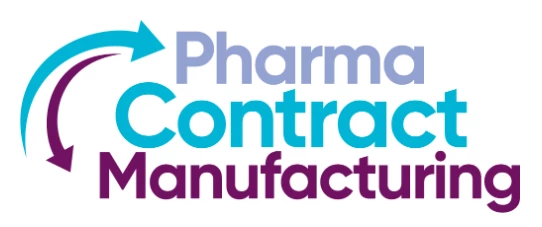The problem of leachables and extractables (L&E) in single-use devices continues to hound both suppliers and end-users, and remains one of the more challenging issues inhibiting regulatory acceptance of single-use devices.
With vendors often selling the same equipment for use at different production scales and stages, our research from our 12th Annual Report and Survey of Biopharmaceutical Manufacturing[1], indicates that biomanufacturers expect vendors to provide full L&E testing and validation for all but their smallest scale single-use products. Indeed, research we have conducted over several years has found broad agreement among end-users that vendors should generate L&E data and validate. Specifically, from 2008 through 2013, we found that more than 8 in 10 biomanufacturers each year strongly agreed or agreed that vendors should generate L&E data and validate. This is a tall order, as each end-user’s operating conditions and situation will likely be different. For regulators to accept L&E data, these differences will need to be accounted for, perhaps through individual process or operation analysis.
On the other hand, over those years, 40-60% of respondents have recognized this dilemma, and, for late stage production, they have noted that they expect to generate L&E data themselves, particularly for Phase III or commercial applications. Not unexpectedly, only 17-30% - expected to generate that data themselves for early clinical applications. In other words, end-users strongly believe that it’s the vendor’s responsibility to generate L&E data for early-stage applications, and are more divided on their responsibility for later-stage applications. Late-stage manufacturing organizations who are in phase III or commercial production may be unwilling to take a chance with vendors and might rather generate L&E data themselves to minimize regulatory risks.
The debate over L&E continues, but single-use suppliers have only limited control over the resins and raw materials they use in their devices. This puts the end-user at a disadvantage with limited transparency into their own supply chain. Since regulatory agencies hold the end-user responsible for controlling any raw material changes, this limited transparency remains a difficult challenge for end-users, who feel that suppliers are in a better position to test and provide any necessary L&E data, consistency monitoring and supporting documentation for their products.
As one end-user has argued in the past:
“When discussing the potential impact of leachable or their breakdown products on cell growth and expression, suppliers will often claim that they can’t test every cell line or predict the future performance of resin manufactures since the SUS industry is very small in comparison to other industries the resin manufactures supply.”
While the End Users choice of a cell line is of course, out of the SUS supplier’s control, the products SUS suppliers sell are marketed as universal Single-Use equipment. For SUS to be truly universal, suppliers must control variability in their resin supply and fabrication process. Some suppliers are making attempts to better control the functionality of the systems they sell. But at present, these advances are going slowly.
Vendors have the challenge of ensuring that proper documentation exists, including related to leachables/extractables, and animal product sources to address BSE and TSE concerns. Some vendors are doing a very good job assembling leachable and extractable as well as any needed BSE/TSE-related data to assist customers address any regulatory concerns. The provision of such data reduces a great deal of the burden of performing time-consuming and expensive extractable studies by single-use customers. As survey data show, end users much desire single-use product suppliers provide full leachables/extractables testing and related documentation. For suppliers/vendors, if not already, sooner or later supplying full testing data will, unavoidably simply be expected, required, and part of routine business practice among vendors.
Paying for Leachables and Extractables Data
End-users are already willing to pay extra for this data. Almost 7 in 10 respondents to our latest annual study – our 12th Annual Report and Survey of Biopharmaceutical Manufacturing Capacity and Production – claim that they would pay a premium if their supplier provided them with “usable” L&E data for their single-use applications. That includes more than one-fifth of respondents who would pay a premium of at least 25% for this data.
Fig. 1: Paying for L&E Data
Source: 12th Annual Report and Survey of Biopharmaceutical Manufacturing, April 2015, www.bioplanassociates.com/12th
But end-users will still likely have to do some costly testing, if only to test and validate their specific bioprocessing systems. Ultimately, leachable/extractables, being animal products-free, BSE/TSE testing (where animal products have been used) and other supply chain documentation will simply be a normal part of all manufacturers and vendors responsibilities to customers.
In a recently-published viewpoint on this topic [2], the BPSA notes the need for a “true industry consensus” with standards set by consensus standard-setting organizations, such as the United States Pharmacopeia (USP), ASTM and ASME-BPE. Such a standardized approach would benefit all parties, but would ultimately rest on component suppliers being the generators of study data. The L&E concern does require comprehensive studies to quantify and define control strategies for these impurities, which might vary from vendor to vendor. Having uniformity and consistency of quality standards and data from vendors will assist in mitigating the customer’s concern.
For now, end-users continue to rate vendors poorly in this regard. Of the various vendor attributes that we tested in our study, their provision of leachables and extractables data that regulators will accept emerged as a critically important attribute to vendors. At the same time, it was one of the attributes to which end-users attributed the lowest levels of satisfaction with their current vendors.
Until true consensus is achieved, vendors need to pay attention to the concerns of manufacturers regarding leachables and disposal of these products, with acceptance of single-use systems for widespread commercial product manufacture dependent on proving their safety, which for some or many products and materials (plastics) still remains an area requiring more research and testing.
It is likely that increased transition of products produced using disposables moving into late stage clinical development might result in this increase concern, suggesting that the consensus standards called for by the BPSA will continue to be a hot-button issue until their resolution.
References:
1. 12th Annual Report and Survey of Biopharmaceutical Manufacturing Capacity and Production, April 2015, Rockville, MD www.bioplanassociates.com/12th
2. BioProcess International, Towards Industry Standardization of Extractables Testing for Single-Use Systems: A Collective BPSA Perspective, March 10, 2015.http://www.bioprocessintl.com/manufacturing/single-use/toward-industry-standardization-extractables-testing-single-use-systems-collective-bpsa-perspective/
Survey Methodology: The 2015 Twelfth Annual Report and Survey of Biopharmaceutical Manufacturing Capacity and Production yields a composite view and trend analysis from 238 responsible individuals at biopharmaceutical manufacturers and contract manufacturing organizations (CMOs) in 31 countries. The methodology also included over 150 direct suppliers of materials, services and equipment to this industry. This year's study covers such issues as: new product needs, facility budget changes, current capacity, future capacity constraints, expansions, use of disposables, trends and budgets in disposables, trends in downstream purification, quality management and control, hiring issues, and employment. The quantitative trend analysis provides details and comparisons of production by biotherapeutic developers and CMOs. It also evaluates trends over time, and assesses differences in the world's major markets in the U.S. and Europe.





















